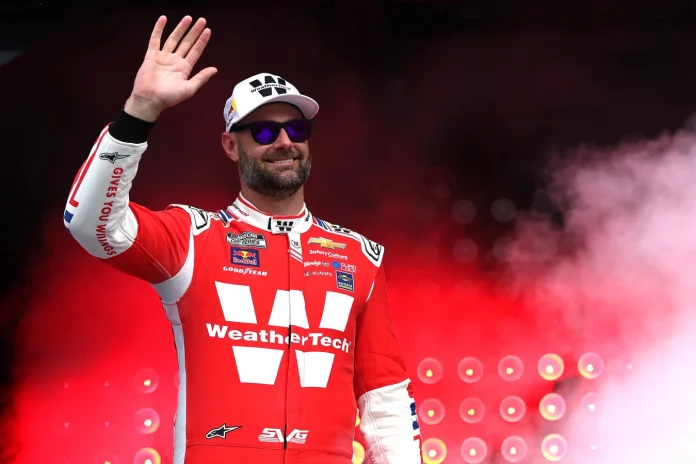Kevin Harvick on NASCAR horsepower has sparked discussion after the former driver commented on NASCAR’s recent decision to boost engine output at short tracks and road courses, starting in 2026. Speaking during his Happy Hour podcast, Harvick welcomed the 80-horsepower increase but said it would likely fall short of delivering dramatic change on the track.
This move will see the Next Gen cars’ horsepower rise from 670 to 750 at tracks such as Martinsville, Bristol, Sonoma, and Watkins Glen. NASCAR officials announced the change in hopes of making racing more thrilling by helping drivers manage throttle response and tire wear better. Despite these intentions, Harvick stressed that the real impact may be minimal for fans and competitors alike.
“I think that it’s at least a step in the right direction. … My hope is they’re looking to go more horsepower down the road as they look at how things evolve. … Kudos to them for giving the cars more horsepower. I don’t want to knock it, but I don’t think anybody will notice,” Kevin Harvick said.
Harvick, a veteran with a reputation for candid assessments, acknowledged the challenge of balancing the sport’s spirit with the financial realities that teams face. Adding more horsepower typically involves considerable costs, something Harvick sees as a barrier to more aggressive performance upgrades.
“This is a situation where it would cost the teams a lot of money, but sometimes you just got to say, ‘Screw it. You’re going to do it. This is what we’re going to do because it’s right for the sport.’ It can’t always be about money. … The horsepower is great, but it’s not going to fix it,” he added.
NASCAR Sets the Stage for Testing with New Engine Package
The first five races of the 2026 NASCAR season will introduce the 750-horsepower configuration. This rollout serves as more than just an initial phase; it is designed as a test period. Feedback and data from these events are expected to inform whether the increased horsepower could be feasible for application at larger ovals, though superspeedways are not likely to be included in expansions.

Watkins Glen, Sonoma, Martinsville, and Bristol—each with their own quirks—will provide a diverse testbed for the new engine package. Harvick’s commentary has resonated among other drivers and motorsport enthusiasts, reigniting ongoing debates about the right balance between car performance, driver skill, and the kind of racing fans want to see.
Historical Engine Changes Spark Concerns Over Costs
Reflecting on recent decades, NASCAR has struggled to keep costs controlled even as engine performance rules shifted. Officials cut horsepower sharply in 2015 through tapered spacers, reducing output from the previous standard of about 850-900 horsepower down to around 725. By 2019, further reductions were implemented, aiming to slow the cars and foster closer competition.
Harvick was among the voices who pointed out that despite cutting horsepower to save money, the actual expenses for teams did not decrease. Instead, costs remained high as engineering challenges evolved.
“When they lowered the horsepower, the price of the engines went up because the valve train it becomes so important. … Nothing went down. The engine bills did not go down and I think that’s the ironic thing about a lot of these scenarios,” Harvick said (via Daily Down Force).
The increased demand for durable and high-quality components meant teams had to invest more in parts like the valve train, neutralizing any intended financial relief. Harvick has emphasized that simply reducing power does not significantly impact teams’ budgets, hinting at the complexity behind cost-containment in motorsports.
The Road Ahead for NASCAR and Horsepower Debates
With the 2026 season on the horizon, drivers like Kevin Harvick and fans are watching closely to see whether incremental horsepower increases deliver the excitement and competitiveness that the sport seeks. Figures like Harvick and officials from NASCAR teams continue to debate whether these changes address the core needs for better racing or simply shift where money is spent.
The upcoming races at tracks like Martinsville, Bristol, Sonoma, and Watkins Glen will serve as a proving ground not just for the new engine configuration, but for NASCAR’s approach to evolving competition without skyrocketing costs. Enthusiasts and industry observers—including those loyal to the NASCAR All-Star traditions—await the results, hoping planned innovations will lead to revitalized racing without compromising financial sustainability for teams and organizations.
"It's at least a step in the right direction." @KevinHarvick's thoughts on NASCAR's decision to boost horsepower at select tracks in 2026. pic.twitter.com/OD0WNjrUTM
— HarvickHappyHour (@HarvickHappyPod) October 14, 2025


